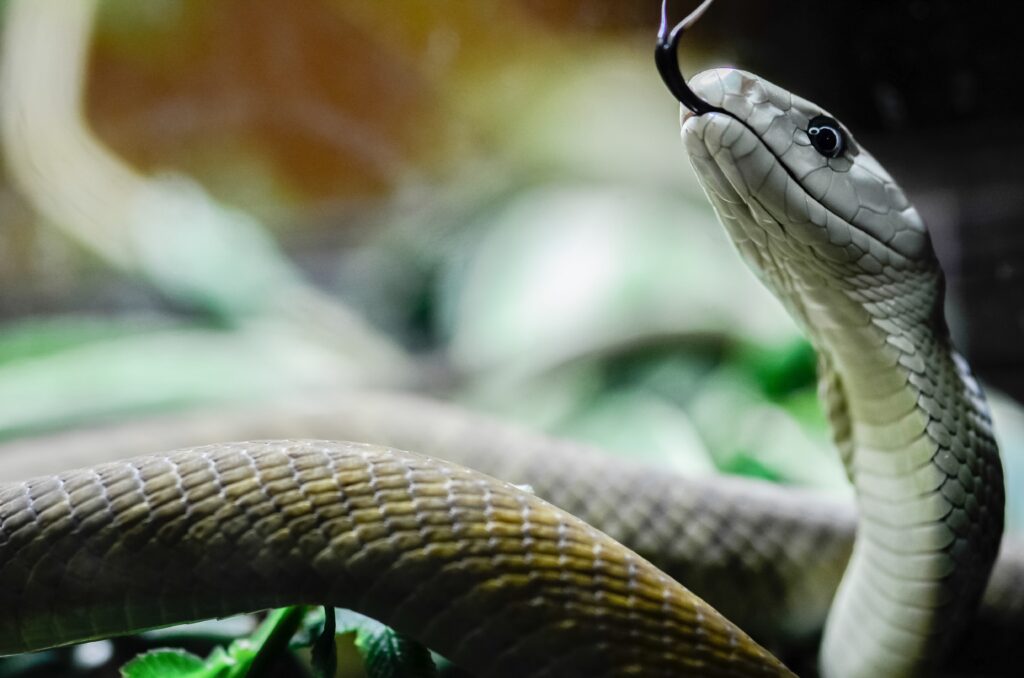For February’s featured animal of the month, we wanted to honor our “Snake Farm” roots by showcasing the formidable black mamba all month long! This snake species is one of the fastest and most venomous snakes in the world. In fact, it is also considered the third most venomous snake species currently housed at Animal World and Snake Farm Zoo. Read this blog to learn all kinds of interesting facts about them!
Reserve your tickets now to become acquainted with the wide array of snakes that call our zoo home!
Black Mamba Pictures That Are Sure to Make You Appreciate These Amazing Reptiles Even More!
Before we show you incredible black mamba photos, we want to provide general background information about these captivating creatures! For starters, did you know that they are the longest venomous snake native to Africa? The average adult black mamba grows anywhere from 6.5 to 8.2 feet long, with certain individuals being reported to grow up to 14 feet long! Another incredible black mamba fact that many of our guests find hard to believe has to do with just how fast these snakes are. Black mambas can move up to 12 miles per hour on land!
This leads us to our next outstanding fact about the snake species— the black mamba is the most venomous mamba species! The three other mamba species (the Jameson’s mamba, the eastern green mamba, and the western green mamba) are formidable snake species, but they pale in comparison to the highly venomous black mamba. Here are some awe-inspiring black mamba pictures that capture this widely feared snake’s underappreciated beauty!
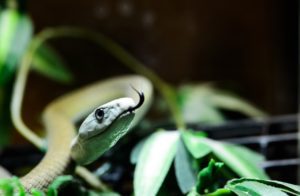
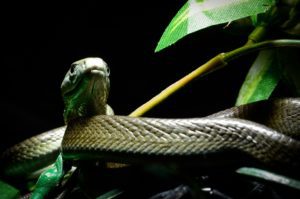
Black Mamba Snake Facts and Common Misconceptions
From their highly deadly venom to being recognized as one of the fastest snakes in the entire world, it is no wonder that the black mamba is feared by many. However, much of this fear is based around harmful misconceptions that countless individuals believe to be indisputably true. In an effort to initiate an ongoing discussion based around this intrepid snake species and countless others, we will now be sharing various black mamba snake facts while dispelling detrimental myths about the snake species. Before doing so, here is another of our stunning black mamba pictures to start this informational section on a high note!
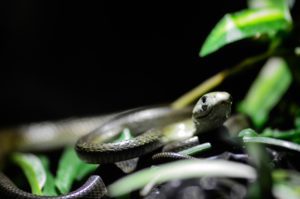
The first fact we will be covering has to do with the optimal black mamba habitat. Unlike other mamba species, which are arboreal and primarily live in trees, the black mamba prefers low, open spaces like savannas, woodlands, and rocky hills. The first misconception we will be covering comes in the form of a question that our guests commonly pose to our knowledgeable staff: do venomous snakes like the black mamba chase people? While snakes will protect themselves when provoked, it is important to note that snakes will leave humans alone if they do not pose an immediate threat to their own well-being. In fact, countless studies have confirmed that black mambas avoid humans whenever possible.
As briefly touched on earlier, another interesting fact about the snake species regards average black mamba speed. Since the black mamba is commonly recognized as one of the fastest snakes in the world, the fact that it can reach speeds of up to 12 miles per hour shouldn’t be shocking. However, it should be noted that this speed can only be maintained for short periods of time, and that it is harder to maintain these speeds on uneven terrain. This interesting fact leads us to our next misconception. One harmful black mamba myth that has been perpetuated through stories and books is the misguided belief that black mambas can quickly roll down hills by biting their own tails to form a loop. As the snake reaches the bottom of the hill, it is widely believed that they straighten like an arrow and stealthily attack their prey. Fortunately, readers can rest assured that this far-fetched scenario is merely a myth.
Visit the Zoo to Meet Snakes in San Antonio From All Around the World!
Even though it makes sense to respect and be cautious of highly venomous snakes, these compelling creatures rarely receive the appreciation and admiration they deserve. By featuring the formidable black mamba throughout the month of February, we hope to pique readers’ interest and curiosity of these often misunderstood animals.
Now that we have covered notable facts about our featured animal of the month, from black mamba speed to common misconceptions about the commendable snake species, we will now discuss some great black mamba snake facts for kids! One of our favorite black mamba snake facts has to do with how this snake got its name. Since black mambas are brown with olive or gray undertones, their name initially seems misleading. However, the snake species is actually named after the distinct blue-black coloration of their mouths. Another amazing black mamba fact for the kiddos is that the snake species has been seen “sunbathing”! Since they are ectotherms (which means they are unable to generate body heat), black mambas rely on the sun to stay warm. Interestingly enough, many black mambas have been noted to have a preferred spot to bask in the sun that they return to on a daily basis!
Slither by Animal World & Snake Farm Zoo’s Award-Winning Reptile Conservation Center
Ever since our zoo was established in 1967, we have made sure to continually honor our “Snake Farm” roots in any way possible. Many of our guests recognize Animal World and Snake Farm Zoo for boasting the most diverse snake collection in the country, and our ability to branch out to ensure that all animal lovers can have the time of their lives during a visit to our zoo. As 2022 came to a close, the Zoo proudly accepted the Comprehensive Immersion Exhibit award from the Zoological Association of America (ZAA). The award, which honors our newly renovated Reptile Conservation Center, recognizes the abundance of work and care that went into these infrastructural changes. Animal residents’ well-being and comfort and zoo guests’ desire for knowledge were always at the very center of these renovations— which more than comes across in the final product. Be sure to stop by our Reptile Conservation Center during your next visit to learn even more about the black mamba and other snake species that call our zoo home!
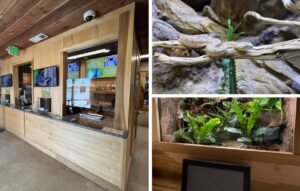
Follow us on Twitter for all the zoological updates you could ask for (and much more)!

